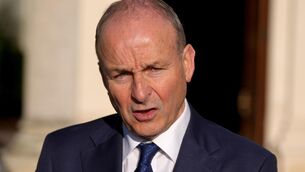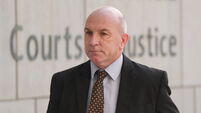Turf deal ‘better than giving €9m a year to Europe’
Try telling that to Jimmy Deenihan, who as minister with the portfolio has responsibility for one of the more divisive issues facing the Coalition: The ban on turf-cutting on some of the country’s bogs.
For the last three weeks, turf-cutters have staged protests outside Mr Deenihan’s constituency office in Listowel, Co Kerry.
Although it has become routine for the Fine Gael -Labour Coalition to criticise its predecessors for all manner of problems, the turf-cutting issue is certainly one Mr Deenihan inherited from the previous government.
Under an EU directive aimed at protecting endangered habitats, Ireland agreed to protect 139 of its 1,500 raised bogs in 53 special areas of conservation (SACs) across the country.
Turf-cutting officially ceased in 2010 in 29 of those SACs. It was supposed to cease on the remaining 24 by the end of last year. A compensation package is on offer but many of those affected don’t want the compensation — they want to be able to continue to cut turf.
Mr Deenihan is not immune to this himself. Moanveanlagh bog in Kerry, which has been designated as one of the SACs, is where his relatives have cut turf for generations.
“My cousins now cut turf there so it’s very difficult for me,” he says.
However, if the cutting does not cease, Ireland faces the prospect of being heavily fined by the EU.
“The point is that the [European] Commission will certainly injunct Ireland if we don’t comply with the regulation. This has been around for years; it has not been addressed by previous ministers and we have to address it now otherwise we’ll be injuncted and it could cost Ireland €9m a year,” he says.
“They [the commission] feel we should do this. Now, of course, I realise it’s very difficult for people — families who’ve been cutting turf and bogs for generations — to break that link, but I’m the minister with responsibility to implement the law and I have to do that.
“But, at the same time, I’m trying to ensure that people will have an alternative site to cut turf on. If there’s not a site they’ll get a supply of fuel until we can get a site for them, or else [compensation] this year [of] €2,000, which is a considerable sum of money.” The compensation package was originally set at €1,000 per year, to be adjusted for inflation, for 15 years.
Last week at the Cabinet, Mr Deenihan got permission to increase the package in a bid, it seems, to end the controversy.
The annual payment will now be €1,500 and a once-off incentive of €500 is being offered to those who sign up to the compensation scheme by the closing date of Feb 29.
It means that those who qualify will get €2,000 this year rather than the €1,000 originally envisaged.
He acknowledges that the revised package is “generous” given the Government’s limited finances but defends it thus: “Surely to offer compensation and an incentive for people not to cut is better than giving Europe €9m a year, with a possibility of the fine being backdated to when we were supposed to close these bogs.”
A special three-day forum chaired by High Court judge Mr Justice John Quirke will begin tomorrow in the Hudson Bay Hotel, Athlone, in a bid to solve outstanding issues.
Elsewhere, the minister — like all the Cabinet — is focusing on what can be done to boost trade and create jobs.
Arts, Heritage and the Gaeltacht might sound like a department with only a limited contribution to make in this regard, but the Government’s recently-published action plan for jobs tells another story.
The department is expected to ensure that the value of the film and television sector in Ireland, and the number of people it employs, double — to over €1bn and 10,000 respectively by 2016.
The department is also expected to “leverage the potential for language and [family] roots tourism”.
This doesn’t sound like much initially, but according to the department, about 3.53m tourists engaged in cultural or historical visits while in Ireland in 2008, spending €2.3bn in the process.
The department will also be expected, through Culture Ireland, to “maximise the business opportunities abroad for cultural and artistic businesses and enterprises by promoting Irish artists worldwide”.
Mr Deenihan points to the fact that while St Patrick’s Day is celebrated widely across the world, there are plenty of places where it isn’t. A report has been produced for him on how the State could “internationalise St Patrick’s Day in a co-ordinated fashion”.
He hopes to bring the celebrations to more cities and widen them in cities where they already take place, with a knock-on effect for Irish artists and performers, as well as tourism.
While many may be cynical about the national holiday it has, he insists, “untapped potential for this country”.
















